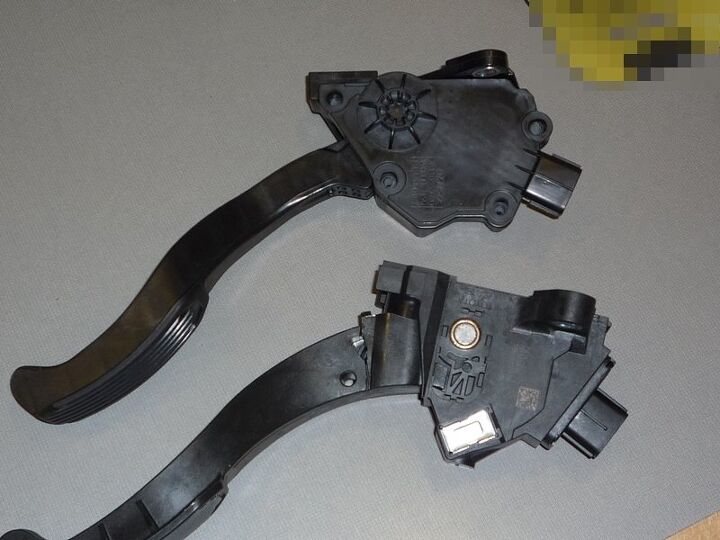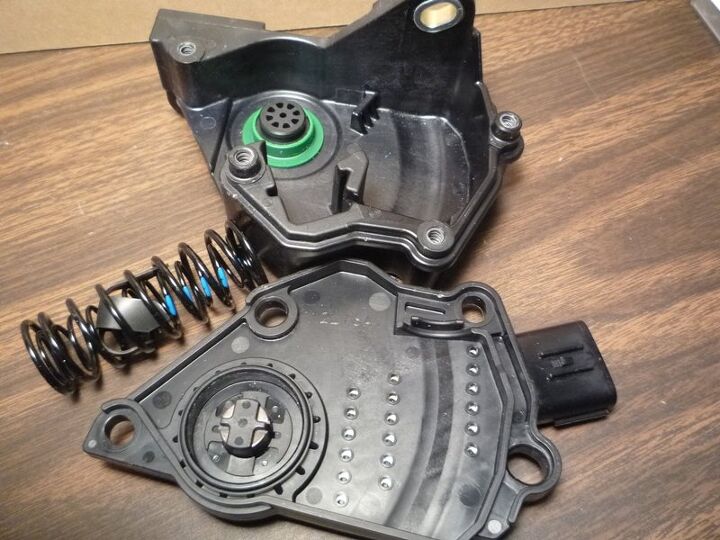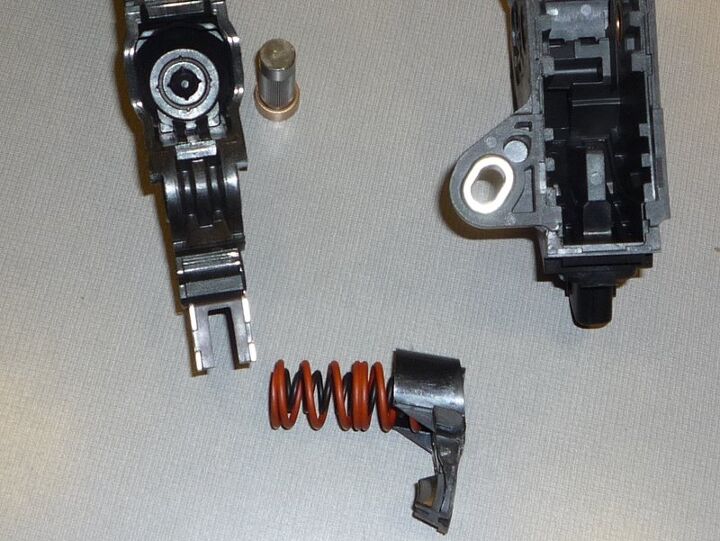#ToyotaRecall
NHTSA Data Dive 4: Did Toyota Recall The Wrong Cars?
When it comes to mountains of data like the NHTSA vehicle complaint data base, one man’s junk is another man’s treasure(trove). Yes, there are limitations. But the remarkable degree of similarity of the UA rate between most badge engineered cars, and GM’s consistently low UA ratings speak of statistical relevance to some of us. One of those is David Lapidus, (TTAC handle: David42), whose data diving and Excel skills vastly overshadow mine.
In the last data dive, I used numbers from Edmunds to come up with a UA complaint rate for 117 cars from MY 2005-2010, excluding the flurry of complaints filed with NHTSA after the Toyota mat recall 0f 9/29/09. But those are cumulative, over the five years. David has taken it to the next level, to the individual model year. We may come back to the whole list another time, but initially we decided to focus on the Toyota Camry, since its large volume of sales and UA complaints would inherently increase the statistical accuracy of the numbers. And although this data dive may not solve the UA puzzle, it does raise serious questions about the most recent recalls and the Congressional barbecue of Toyota.
The Complete Guide To Toyota Gas Pedals: Teardown, Pictures, Toyota's Fix, Analysis, And Commentary
TTAC's NHTSA Data Dive: 95 Cars Ranked In Rate Of Unintended Acceleration Complaints
[Update 3: This post is now officially obsolete, having been supplanted by the much more accurate update here]
[Update 2: In a new post, I have noted that 53% of Toyota UA complaints were filed after the mat advisory was issued on 9/29/09. The number used her are not adjusted for that. As soon as they are available, I will redo this spreadsheet, using more accurate sales stats]
[Update ans Disclaimer: As I noted below, this spreadsheet will be updated when I can access actual sales stats from our source, Morgan and Co. on Monday for the years (’05-’10) covered. That will very likely change the rankings somewhat. The Lincoln may actually be #2. But this is not about which car is #1 or #2; it’s about finding patterns in certain makes, and within makes. It’s an attempt to see if these statistics can shed light on a complex and opaque issue. As an example, why the Toyota Yaris is so low in reported incidents. It’s more about these patterns and discrepancies, than about singling out the car with the highest rate, so please don’t take the current exact rankings as the final word. It’s a work in progress. The fact that the complaints are not tabulated by individual MY also limits this substantially, as running changes in a given car during the five year period will change things significantly. So this data dive is fundamentally flawed; take it as such. But nevertheless, it’s still a huge step over the raw data that Edmunds put out, which doesn’t begin to account for the number of any given cars sold.]
Numbers and statistics are largely useless without context. Edmunds.com took a first good step in going through NHTSA’s data base and reporting the number of UA events reported per make, brand and vehicle. But what was obviously missing was the correlation to the number of cars on the road in relation to those numbers. We’ve taken the next (tedious) step, and the results are most interesting indeed. They’re certainly not completely conclusive, but we’re not finished yet. The full list of 95 cars follows, as well as our methodology, a stab at some analysis, and more questions to still be answered.
NHTSA Has Electrical Engineers… But Where?
Before Transportation Secretary Ray LaHood even took the stand before the House Energy Committee, the Washington Post [via TheCarConnection] reported that:
NHTSA officials told investigators that the agency doesn’t employ any electrical engineers or software engineers.
Down on the Potomac, zingers like that go over like an ounce of catnip in a phone booth full of rowdy toms. And sure enough, the question came up at LaHood’s testimony. In fact, it came up twice. And it was the closest thing to a real “gotcha” moment in a long day of testimony.
Denso US Office Raided By FBI
Toyota Recall Includes Computer Reflash, Trimming Gas Pedals
We’ve gotten hold of documents relating to that other Toyota recall, the one from last fall regarding pedal interference with floor mats. Tying the floor mats to the seats was the short term fix, but now Toyota has the permanent solution. This includes cars with the Denso pedal that is not part of the sticky-pedal recall. The main features: cutting off the bottom of the pedal to make it shorter (yes, with a reciprocating saw) reworking the sound-deadening and carpet near the pedal, and most important, from our point of view, a reflash of the computer to give braking priority over throttle inputs.
TTAC Does The Toyota Pedal Shim Fix: Stop Gap Solution At Best
Update: a portal to all of TTAC’s articles on the subject of Toyota gas pedals is here:
Toyota has sent instructions and the shims for the field fix of the recalled sticky CTS gas pedals to dealers as of today. We have obtained the instructions (pdf here) [Hat Tip: Roxer], shims, and carried out the fix on a new CTS pedal accordingly. Follow along as we carry out the fix, and how we arrived at our unhappy conclusion.
Toyota Unintended Acceleration Gremlins Running Amok – In The Media And At Illegal Speeds
The media and “celebrities” are making hay over the Toyota recall issue, desperate to find evidence of electronic and software gremlins. We’re adamant in stating that Toyota needs to change their software to give braking priority over a stuck pedal, and to replace the pedals, of course. And there may well be genuine software or electronic glitches out there, but we’d like to see solid evidence of them. Instead, we’re stuck listening to Steve Wozniak’s experience with a faulty cruise control on his Prius. It’s being spun as an example of Toyota’s electronics gremlins, creating confusion and scare-mongering. As if there wasn’t enough of that already.
Toyota Gas Pedal Fix Simulated: Friction Reduced, But By Too Much?
Update: a portal to all of TTAC’s articles on the subject of Toyota gas pedals is here:
We’ve taken it apart, explained Toyota’s intended fix, and now we’ve replicated the “fix” to see what effect it has. It works, but does it work too well?
Toyota Gas Pedal Fix Explained – With Exclusive Photos
Update: A portal to all of TTAC’s related articles on Toyota gas pedals is here:
Toyota has released their official “fix” for the sticky CTS-made gas pedals on the recalled models affected. From their graphic, it’s difficult to understand what parts are involved, and how they work. Thanks to our recent tear-down of the CTS pedal, we have the pictures and familiarity with the unit to explain it in detail.
Exclusive: TTAC Takes Apart Both Toyota Gas Pedals
Update: To see all of TTAC’s related articles on the subject of Toyota gas pedals, go here:
In yesterday’s post , we offered a bounty for anyone to open up both the CTS (bottom) and Denso (top) Toyota gas pedal assemblies. No one took us up, and no one anywhere else has done it, so we took it upon ourselves . Here they are, both e-pedal assemblies taken apart and examined, in our quest to understand if and what the significant differences are, and how Toyota’s possible “shim” fix would work. On initial observation, it appears that the CTS may be perceived as being the more solidly engineered/built unit, in that the pedal pivots on a traditional and solid steel axle whose bearings are brass or bronze sleeves. The Denso’s whole pivot and bearing surfaces are relatively flimsy-feeling plastic. But that can be deceptive, and we’re not qualified to judge properly if it is indeed inferior or superior. So the question that goes beyond the analysis of these e-pedals is this: are these units really the full source of the problem, or are they scape goats for an electronics and/or software glitch? Pictures and tear down examination and analysis follows:
Update #2: It’s clear to me now that the CTS unit I took apart already had the side cover plates (sheet metal) removed before I examined it. One can see where they fit, and are obviously intended to protect the exposed axle pivot and bushing seen above and below:
(Update #3: Also see our follow-up stories on Toyota’s fix and our replication of the fix and its results)


























Recent Comments